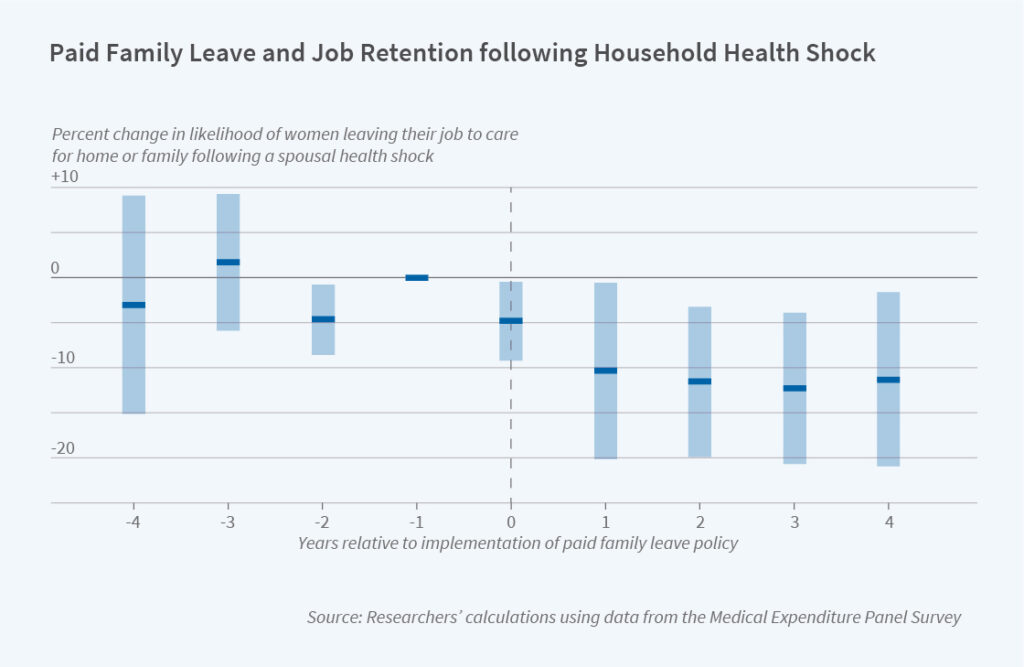The Impact of Paid Family Leave on Job Retention

Paid family leave (PFL) provide paid time off for workers who care for a newborn (parental leave) or care for a sick or temporarily disabled family member (caregiving leave). The US is one of the few countries that does not offer PFL, but a number of State have decided to adopt their own policy. California was the first state to enact PFL and did so in 2004. As of now, 11 states (plus DC) have some for of PFL.
To better understand how PFL impacts job retention, a paper by Coile, Rossin-Slater and Su (2022) rely on a difference-in-difference strategy to examine job retention trends before and after the enactment of PFL. The authors focus on the introduction of PFL in 3 large states: California, New York and New Jersey. They use data from 1996-2019 Medical Expenditure Panel Survey (MEPS) to identify workers whose spouse or child experiences a health shock (i.e., hospitalization or surgery) during the survey. Based on this approach, the authors find that:
…having access to PFL leads to a 7.0 percentage point decline in the probability that working wives whose spouse has a hospitalization or surgery report “leaving a job to care for home or family” in the survey interviews following the health shock. For men, there is no such effect. This gender difference in the effect of PFL access is consistent with previous literature that has found that women are substantially more likely to engage in caregiving for their ill spouses than men. Interestingly, the effects of PFL access on employment are concentrated among spousal caregivers with low levels of education, suggesting that government-provided PFL may reduce pre-existing disparities in leave use and associated outcomes.
You can read the full paper or the NBER Bulletin summary.




